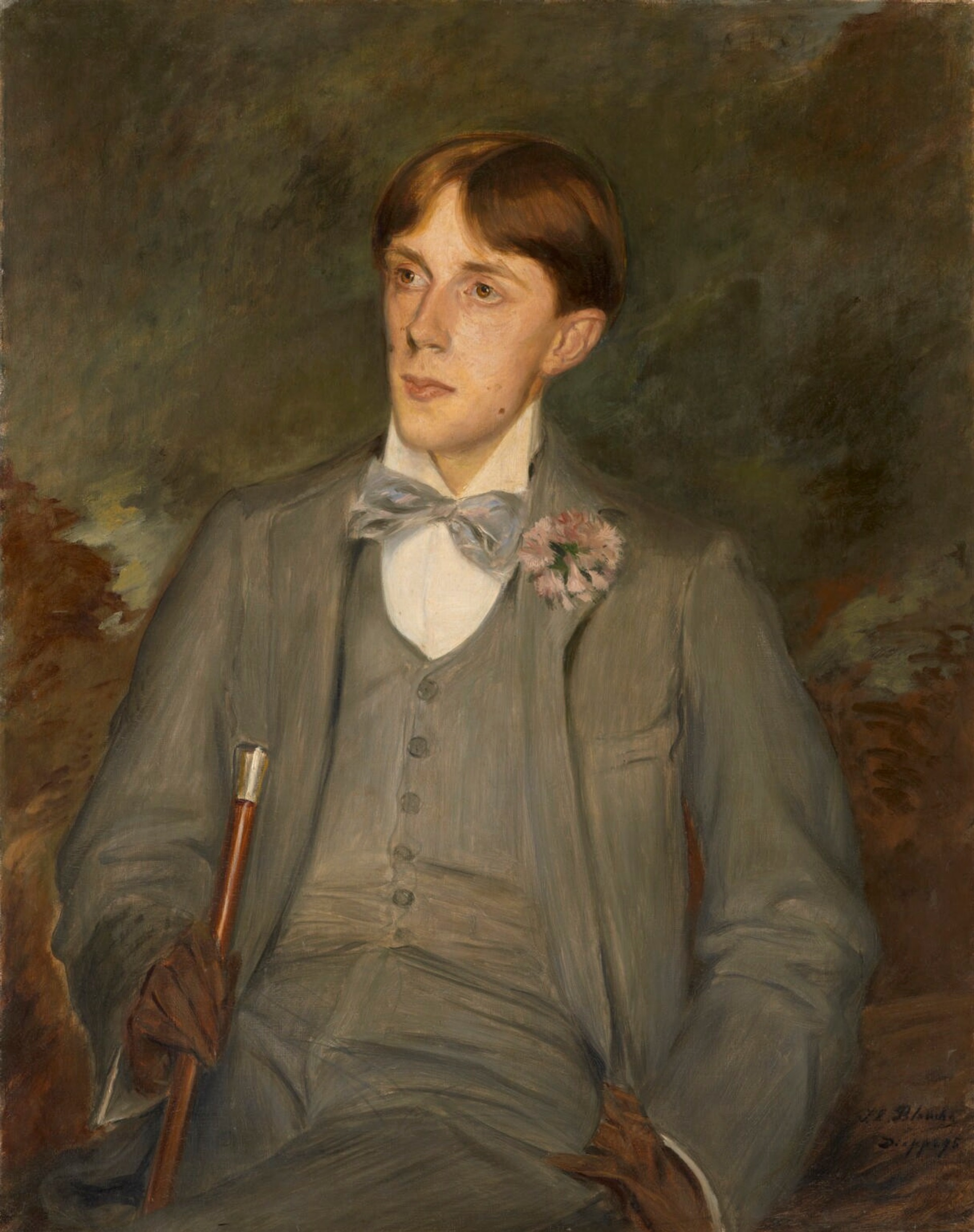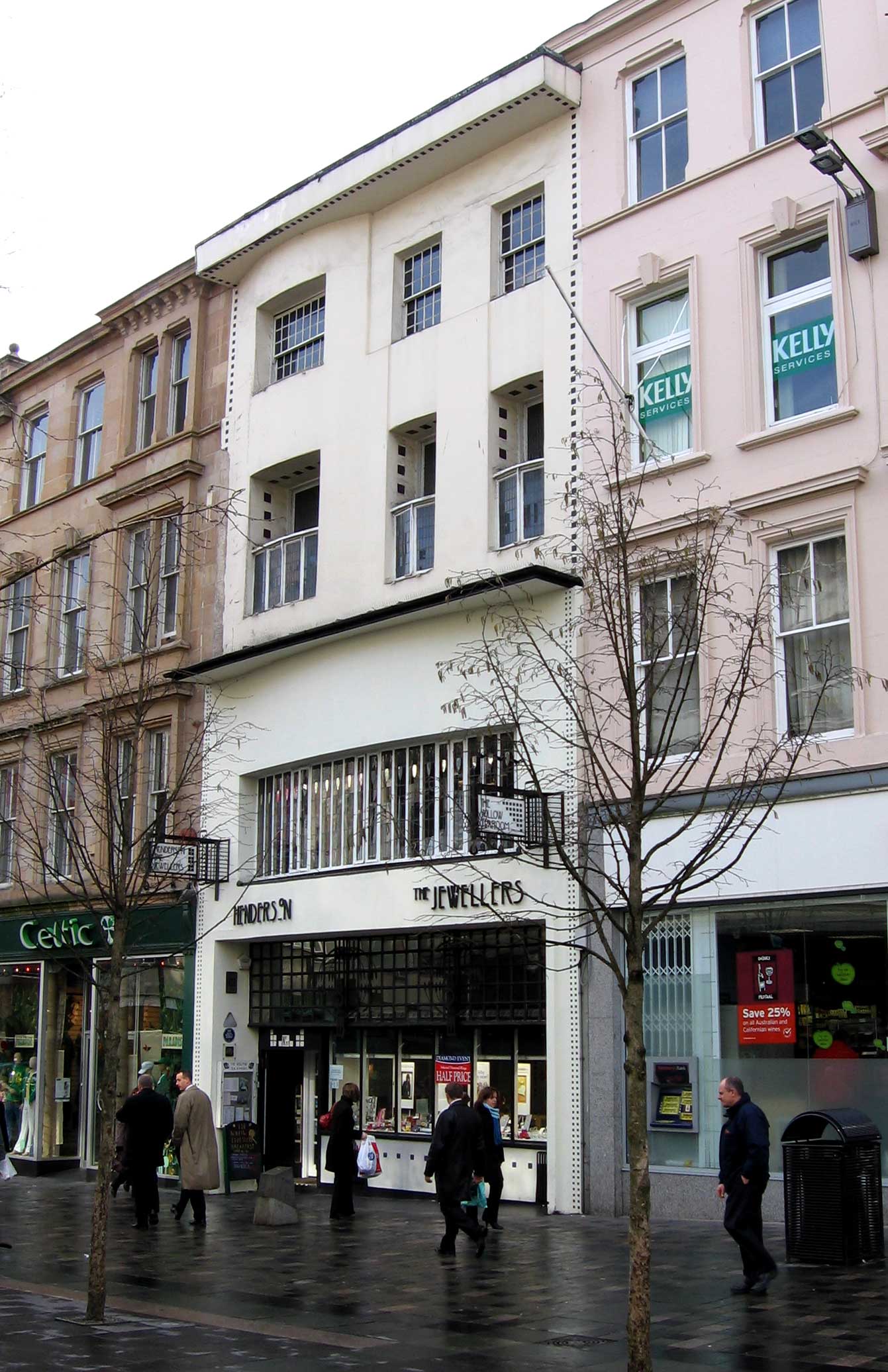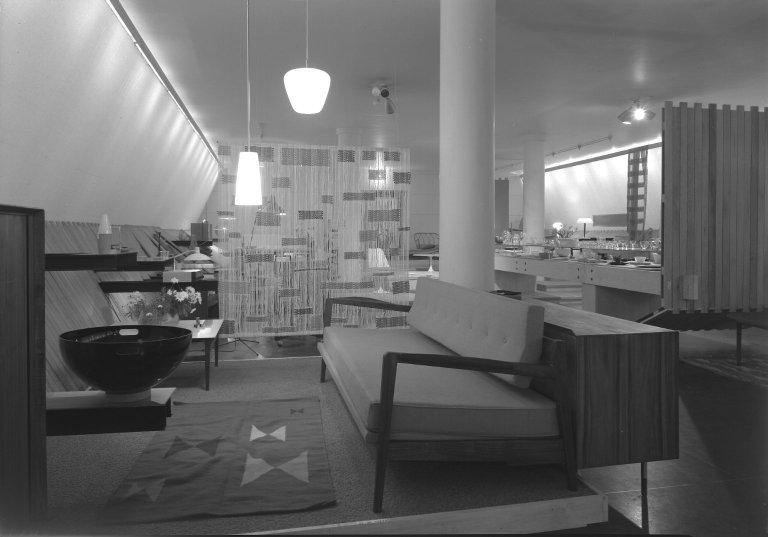|
The Studio (magazine)
''The Studio: An Illustrated Magazine of Fine and Applied Art'' was an illustrated fine arts and decorative arts magazine published in London from 1893 until 1964. The founder and first editor was Charles Holme. The magazine exerted a major influence on the development of the Art Nouveau and Arts and Crafts movements. It was absorbed into ''Studio International'' magazine in 1964. History ''The Studio'' was founded by Charles Holme in 1893. Holme was in the wool and silk trades, had travelled extensively in Europe and had visited Japan and the United States with Lasenby Liberty and his wife Emma. During his travels he had formed: He retired from trade in order to start ''The Studio''. He had hoped to engage Lewis Hind as the editor of the new venture, but Hind went instead to William Waldorf Astor's ''Pall Mall Budget''. He suggested Joseph Gleeson White as an alternative. Gleeson White edited ''The Studio'' from the first issue in April 1893. In 1895 Holme took over as ... [...More Info...] [...Related Items...] OR: [Wikipedia] [Google] [Baidu] |
Aubrey Beardsley
Aubrey Vincent Beardsley (21 August 187216 March 1898) was an English illustrator and author. His black ink drawings were influenced by Woodblock printing in Japan, Japanese woodcuts, and depicted the grotesque, the decadent, and the erotic. He was a leading figure in the Aestheticism, aesthetic movement which also included Oscar Wilde and James McNeill Whistler. Beardsley's contribution to the development of the Art Nouveau and poster art, poster styles was significant despite his early death from tuberculosis. He is one of the important Modern Style (British Art Nouveau style), Modern Style figures. Early life, education, and early career Beardsley was born in Brighton, Sussex, England, on 21 August 1872 and christened on 24 October 1872. His father, Vincent Paul Beardsley (1839–1909), was the son of a Clerkenwell jeweler; Vincent had no trade himself (partly owing to inherited tuberculosis, from which his own father had died aged only 40), and relied on a private income ... [...More Info...] [...Related Items...] OR: [Wikipedia] [Google] [Baidu] |
Charles Rennie Mackintosh
Charles Rennie Mackintosh (7 June 1868 – 10 December 1928) was a Scottish architect, designer, water colourist and artist. His artistic approach had much in common with European Symbolism. His work, alongside that of his wife Margaret Macdonald, was influential on European design movements such as Art Nouveau and Secessionism and praised by great modernists such as Josef Hoffmann. Mackintosh was born in Glasgow and died in London. He is among the most important figures of Modern Style (British Art Nouveau style). Early life and education Charles Rennie Mackintosh was born at 70 Parson Street, Townhead, Glasgow, on 7 June 1868, the fourth of eleven children and second son of William McIntosh, a superintendent and chief clerk of the City of Glasgow Police. He attended Reid's Public School and the Allan Glen's Institution from 1880 to 1883. William's wife Margaret Mackintosh née 'Rennie' grew up in the Townhead and Dennistoun (Firpark Terrace) areas of Glasgow. Name He cha ... [...More Info...] [...Related Items...] OR: [Wikipedia] [Google] [Baidu] |
Magazines Published In London
A magazine is a periodical publication, generally published on a regular schedule (often weekly or monthly), containing a variety of content. They are generally financed by advertising, purchase price, prepaid subscriptions, or by a combination of the three. Definition In the technical sense a ''journal'' has continuous pagination throughout a volume. Thus ''Business Week'', which starts each issue anew with page one, is a magazine, but the '' Journal of Business Communication'', which continues the same sequence of pagination throughout the coterminous year, is a journal. Some professional or trade publications are also peer-reviewed, for example the '' Journal of Accountancy''. Non-peer-reviewed academic or professional publications are generally ''professional magazines''. That a publication calls itself a ''journal'' does not make it a journal in the technical sense; ''The Wall Street Journal'' is actually a newspaper. Etymology The word "magazine" derives from Arabic , t ... [...More Info...] [...Related Items...] OR: [Wikipedia] [Google] [Baidu] |
Design Magazines
A design is a plan or specification for the construction of an object or system or for the implementation of an activity or process or the result of that plan or specification in the form of a prototype, product, or process. The verb ''to design'' expresses the process of developing a design. In some cases, the direct construction of an object without an explicit prior plan (such as in craftwork, some engineering, coding, and graphic design) may also be considered to be a design activity. The design usually has to satisfy certain goals and constraints; may take into account aesthetic, functional, economic, or socio-political considerations; and is expected to interact with a certain environment. Typical examples of designs include architectural and engineering drawings, circuit diagrams, sewing patterns and less tangible artefacts such as business process models. Designing People who produce designs are called ''designers''. The term 'designer' generally refers to someone who works ... [...More Info...] [...Related Items...] OR: [Wikipedia] [Google] [Baidu] |
Defunct Magazines Published In The United Kingdom
{{Disambiguation ...
Defunct (no longer in use or active) may refer to: * ''Defunct'' (video game), 2014 * Zombie process or defunct process, in Unix-like operating systems See also * * :Former entities * End-of-life product * Obsolescence Obsolescence is the state of being which occurs when an object, service, or practice is no longer maintained or required even though it may still be in good working order. It usually happens when something that is more efficient or less risky r ... [...More Info...] [...Related Items...] OR: [Wikipedia] [Google] [Baidu] |
Visual Arts Magazines Published In The United Kingdom
The visual system comprises the sensory organ (the eye) and parts of the central nervous system (the retina containing photoreceptor cells, the optic nerve, the optic tract and the visual cortex) which gives organisms the sense of sight (the ability to detect and process visible light) as well as enabling the formation of several non-image photo response functions. It detects and interprets information from the optical spectrum perceptible to that species to "build a representation" of the surrounding environment. The visual system carries out a number of complex tasks, including the reception of light and the formation of monocular neural representations, colour vision, the neural mechanisms underlying stereopsis and assessment of distances to and between objects, the identification of a particular object of interest, motion perception, the analysis and integration of visual information, pattern recognition, accurate motor coordination under visual guidance, and more. The ... [...More Info...] [...Related Items...] OR: [Wikipedia] [Google] [Baidu] |
Art Nouveau Magazines
Art is a diverse range of human activity, and resulting product, that involves creative or imaginative talent expressive of technical proficiency, beauty, emotional power, or conceptual ideas. There is no generally agreed definition of what constitutes art, and its interpretation has varied greatly throughout history and across cultures. In the Western tradition, the three classical branches of visual art are painting, sculpture, and architecture. Theatre, dance, and other performing arts, as well as literature, music, film and other media such as interactive media, are included in a broader definition of the arts. Until the 17th century, ''art'' referred to any skill or mastery and was not differentiated from crafts or sciences. In modern usage after the 17th century, where aesthetic considerations are paramount, the fine arts are separated and distinguished from acquired skills in general, such as the decorative or applied arts. The nature of art and related concepts, such ... [...More Info...] [...Related Items...] OR: [Wikipedia] [Google] [Baidu] |
Léon-Victor Solon
Léon-Victor Solon (17 April 1873 – 27 December 1957), son of ceramist Marc-Louis Solon, was an English painter, ceramist, and graphic artist. He was a purveyor of the Art Nouveau and Art Deco styles and an important Modern Style (British Art Nouveau style) figure. Personal life Solon was the eldest son of Marc-Louis Solon, employee of the factory Mintons in Stoke-on-Trent, and Laure Arnoux, daughter of the artistic director there, Léon Arnoux. He was the brother of fellow artists Camille Solon and Albert Solon of Solon and Schemmel Tile Company. His grave is located in Lakeland, Florida. Career Solon was artistic director of Mintons between 1900 and 1909, and made an important contribution to the development of art nouveau in the Minton ceramic collections. In 1901, he was joined by John William Wadsworth (1879–1955) and both incorporated motifs borrowed from the Viennese secessionist movement. He specialized in tube-lined vases and plaques marketed as "secessionist w ... [...More Info...] [...Related Items...] OR: [Wikipedia] [Google] [Baidu] |
Good Design
The Good Design movement was an artistic movement or design concept that originated in the 1930s, but took form principally in the United States immediately after the Second World War. Designs made under the influence of Good Design include buildings and furniture, but also everyday objects such as kitchen implements, household objects and garden tools. Names associated with the movement include Charles and Ray Eames, László Moholy-Nagy and Hans Wegner, The Museum of Modern Art of New York was an influential force on the movement. A major exhibition, ''Good Design'', was held there from 23 September to 30 November 1952. The retrospective exhibition ''What Was Good Design? MoMA's Message, 1944–56'' was also held at MoMA, from 6 May 2009 to 10 January 2011. References Further reading * Paul T. Frankl (1928). ''New dimensions: the decorative arts of today in words & pictures''. New York: Payson & Clarke. * Edgar Kaufmann (950. ''Prize designs for modern furniture from the In ... [...More Info...] [...Related Items...] OR: [Wikipedia] [Google] [Baidu] |
Modernism
Modernism is both a philosophy, philosophical and arts movement that arose from broad transformations in Western world, Western society during the late 19th and early 20th centuries. The movement reflected a desire for the creation of new forms of art, philosophy, and social organization which reflected the newly emerging industrial society, industrial world, including features such as urbanization, architecture, new technologies, and war. Artists attempted to depart from traditional forms of art, which they considered outdated or obsolete. The poet Ezra Pound's 1934 injunction to "Make it New" was the touchstone of the movement's approach. Modernist innovations included abstract art, the stream-of-consciousness novel, montage (filmmaking), montage cinema, atonal and twelve-tone music, divisionist painting and modern architecture. Modernism explicitly rejected the ideology of Realism (arts), realism and made use of the works of the past by the employment of reprise, incorpor ... [...More Info...] [...Related Items...] OR: [Wikipedia] [Google] [Baidu] |
Charles Voysey (architect)
Charles Francis Annesley Voysey (28 May 1857 – 12 February 1941) was an English architect and furniture and textile designer. Voysey's early work was as a designer of wallpapers, fabrics and furnishings in a Arts and Crafts style and he made important contribution to the Modern Style (British Art Nouveau style), and was recognized by the seminal '' The Studio'' magazine. He is renowned as the architect of several country houses. He was one of the first people to understand and appreciate the significance of industrial design. He has been considered one of the pioneers of Modern Architecture, a notion which he rejected. His English domestic architecture draws heavily on vernacular rather than academic tradition, influenced by the ideas of Herbert Tudor Buckland (1869–1951) and Augustus Pugin (1812–1852). The Sanderson wallpaper factory (1901) in Chiswick, which he designed, is named Voysey House in his memory. Education Born at Kingston College, at Hessle, Yorkshire on ... [...More Info...] [...Related Items...] OR: [Wikipedia] [Google] [Baidu] |
Pall Mall Budget
The ''Pall Mall Budget'' was a weekly magazine published in London from 1868 until 1920. It was a weekly digest of articles from evening newspaper ''The Pall Mall Gazette'' (1865 to 1923). The ''Pall Mall Budget'' was re-launched in 1893 by William Waldorf Astor. C. Lewis Hind was its editor from 1893 to 1895. The full title in 1869, as displayed on the title page of Volume 2 as bound, was ''The PALL MALL BUDGET Being a Weekly Collection of Articles Printed in the PALL MALL GAZETTE from day to day: With a Summary of News.'' References External links ''The Pall Mall Budget''at Hathitrust Digital Library (holdings from 1869 to 1889) News magazines published in the United Kingdom Weekly magazines published in the United Kingdom Defunct magazines published in the United Kingdom Magazines published in London Magazines established in 1868 Magazines disestablished in 1920 Budget A budget is a calculation play, usually but not always financial, for a defined period, o ... [...More Info...] [...Related Items...] OR: [Wikipedia] [Google] [Baidu] |









